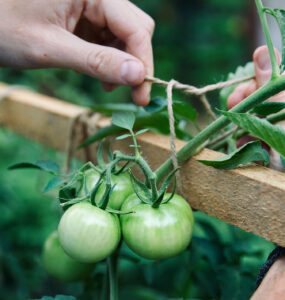
Poplar Borer
by Shirley Martin
We have two small dogs who are getting up in years making more temperate weather ideal for walking them. My daughter and I decided to check out the local lake with the dogs for a change of scenery. Our pace was leisurely, allowing the dogs to explore the scents en route and us to enjoy the front gardens as we passed.
Nearing the lake I noticed visible signs of distress in some columnar aspens planted in the boulevards. A few of their canopies were a bit thin, indicative of drought stress and at the base of each tree was a pile of sawdust.
I went in for a closer look and discovered the indicators of a borer infestation. The trunks, and some of the larger, branches were riddled with small holes, in some cases, roughly 1/4 inch big; and sap was oozing down the trunk.
The adult Poplar Borer is approximately an inch in length, with antennae as long as its body. The grey-blue speckles on their brown back helps them to camouflage against the trunk of the poplar tree. From June to August they emerge, mate, lay eggs within niches on the bark, and the resulting larvae become the real troublemakers. They burrow into the bark where they stay until spring. When spring arrives they burrow further into the heartwood, tunneling and eating for two years until they emerge as adults.
This year has seen instances of borers on the incline, partly due to the drought. Trees under stress, including drought, are more inclined to be bothered by insects among other problems. The key to prevention is to keep the trees happy. Doing so is not always easy during a drought. At least we don’t have water restrictions like Vancouver where water reservoirs, rivers, and creeks are so depleted that residents are not allowed to water outdoors at all. Not even containers.
I can’t help imagine the stress those poor plants are experiencing. Since nature is beyond our control, we at least maintain a regular watering regimen of our gardens. Trees in optimal health are less likely to have insect or disease problems.
There are insecticides available for the adult borer but once the larvae have burrowed in the tree there are no controls available. Susceptible trees may be further subject to other insect problems, cankers or fungus as the borers weaken the tree.
The best we can do to take care of them is water them, a find an ideal site, and provide the most optimal conditions at our disposal. The rest is up to nature.















